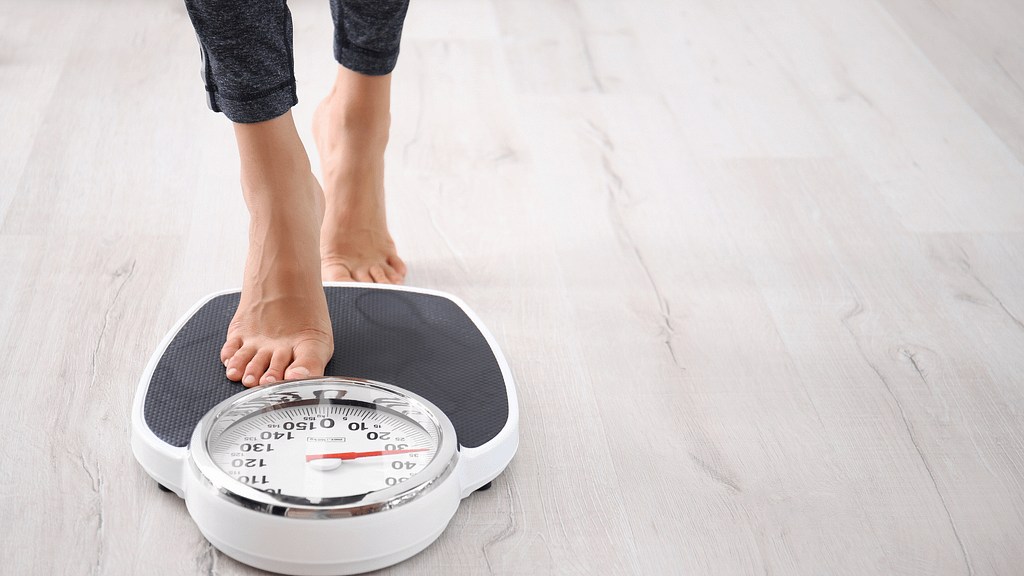
Ozempic took the world by storm. Originally made for diabetes, it became a favorite for rapid weight loss. But there’s a catch. Not everyone can afford it. Some experience side effects. Others just want natural options.
So what’s the alternative?
Natural alternatives to Ozempic are now trending. More people are ditching synthetic drugs for holistic, long-term solutions. And honestly? It makes sense. You want to feel in control. You want something that supports your body—not something that overrides it.
In this blog, we’ll explore the best natural GLP-1 alternatives for weight loss. You’ll also learn how to control blood sugar without Ozempic, using:
- Plant-based supplements
- Gut-friendly foods
- Lifestyle changes backed by science
- Real stories and fun facts
Fast Fact: Ozempic Isn’t a Weight Loss Drug (Technically)
Ozempic was FDA-approved for type 2 diabetes, not weight loss.
But it mimics a gut hormone (GLP-1) that controls appetite. That’s what made it go viral. Many people now want the benefits of Ozempic—like appetite suppression and blood sugar balance—without the needle or the cost.
The good news? Nature already provides powerful GLP-1 boosters. You just have to know where to look. We’ve done the research. We’ve broken it down. And you’re about to learn how to get Ozempic-like results, naturally.
What Is Ozempic?
Ozempic is a brand name. The active ingredient inside it is semaglutide. Semaglutide is a GLP-1 receptor agonist. That’s a fancy way of saying: it mimics a hormone in your gut.
This hormone—GLP-1—gets released when you eat. It tells your brain you’re full. It slows digestion. It reduces cravings. Ozempic uses this effect to help people lose weight and lower blood sugar. Sounds amazing, right? It is—but it comes with baggage.
Why Doctors Prescribe It
Ozempic is FDA-approved for type 2 diabetes, not weight loss. But here’s the twist:
Patients started shedding pounds. Fast.
People began using it off-label for weight loss. Hollywood jumped on board. Influencers followed. Then demand exploded.
The Catch
Let’s be real:
- It’s expensive. We’re talking $800+ per month without insurance.
- It can mess with your stomach. (Nausea, bloating, fatigue—none of it is fun.)
- It’s an injection. Not a pill. And you have to do it every week.
- People often gain the weight back when they stop using it.
- It doesn’t fix your habits—it just turns off your appetite for a while.
Oh, and good luck finding it. It’s constantly out of stock.
Real Talk
If you’re trying to lose weight or balance your blood sugar, Ozempic isn’t your only option. You don’t need a shot to take control of your body. There are natural alternatives to Ozempic that work with your body, not against it. Some help you feel full. Others support your gut. A few can even mimic that GLP-1 effect. And the best part? No needles. No prescriptions. Way fewer side effects.
Fun Fact:
Your gut naturally produces GLP-1 after you eat. But when your gut bacteria are off? That process gets weaker. That’s where natural alternatives to Ozempic come in—they help you get back in sync.
Mini Research Bite:
A 2021 study in Nature Reviews Endocrinology found that certain fibers, herbs, and probiotics can boost GLP-1 levels naturally—without drugs. Yes, your gut can do what Ozempic does… if you treat it right.
Why Even Look for Natural Alternatives to Ozempic?
Let’s be honest. Ozempic isn’t for everyone. Some people can’t get it. Others just don’t want to deal with the side effects. And many are saying, “There has to be a better way.” If that’s you? You’re not alone. A growing number of people are turning to natural alternatives to Ozempic—and for good reason.
It’s Expensive
Not everyone can afford a $1,000 injection every month. Even with insurance, the co-pay can sting. Natural options? Way cheaper—and sometimes even free (hello, daily walks).
Side Effects Suck
Nausea. Bloating. Fatigue. Constant stomach drama. Some users report losing interest in food altogether. And not in a healthy way. That’s not sustainable. You shouldn’t have to feel miserable just to lose a few pounds.
Holistic Just Feels Better
You’re not broken. Your body just needs support. Instead of shutting down hunger with a drug, why not boost your body’s natural signals? There are foods, herbs, and habits that do exactly that. And they come with bonus perks—better sleep, better digestion, more energy.
It’s About More Than Weight
Sure, weight loss is part of it. But this is also about:
- Stabilizing blood sugar
- Reducing cravings
- Healing your metabolism
- Feeling more in control
The goal? A body that works with you, not against you. That’s where natural GLP-1 boosters come in. Let’s look at some of the most powerful ones out there.
Natural GLP-1 Boosters That Actually Work
These aren’t magic pills. But they support your body in real, proven ways. And yes—they can help you mimic some of the benefits of Ozempic.
No prescriptions needed.
1. Berberine
Berberine is one of the most powerful natural alternatives to Ozempic. It’s a compound found in several plants.
How does it work?
It activates something called AMPK—often called the “metabolic master switch.” That’s similar to how metformin works. (Metformin, by the way, is another diabetes drug.)
Research Snapshot:
Multiple studies show that berberine can lower blood sugar just as effectively as prescription meds. It also helps improve insulin sensitivity, which is key if you’re dealing with belly fat or blood sugar swings. Some even call it “nature’s Ozempic.”
Pretty cool, right?
2. Inulin + Prebiotic Fiber
You’ve probably heard “fiber is good for you.” But inulin? That’s a special kind. It’s a prebiotic fiber, meaning it feeds the good bacteria in your gut. Why does that matter? Because your gut bacteria help regulate GLP-1. And the better your gut health, the better your hormone response.
Fun Fact:
Chicory root is one of the richest sources of inulin. Other good sources: garlic, onions, leeks, and Jerusalem artichokes. Add them to your meals and you’re literally fueling your GLP-1 response.
3. Probiotics
Let’s talk about your gut again. (It’s kind of the star of the show.) Certain probiotic strains can increase GLP-1 production naturally. That means better blood sugar control… and better appetite regulation too. Plus, a happy gut = better mood and less bloating. Win-win.
Research Bite:
A study published in Frontiers in Endocrinology found that gut bacteria directly affect GLP-1 levels and insulin function. It’s all connected. Look for probiotic strains like Lactobacillus plantarum or Bifidobacterium lactis. Or eat more fermented foods—like kefir, kimchi, or sauerkraut.
4. Omega-3 Fatty Acids
These healthy fats do more than support your heart. They also fight inflammation, which helps improve your insulin response. And when your body is less inflamed, it can regulate hunger hormones more easily. That includes—you guessed it—GLP-1.
Smart Tip:
You can get omega-3s from wild-caught salmon, flaxseeds, walnuts, or high-quality fish oil supplements.
Herbal and Nutritional Supplements That Mimic Ozempic
If you’re not into injections, pills, or crazy side effects—this part is for you. There are powerful herbs and supplements that support blood sugar control, fight cravings, and help you feel full. They don’t replace Ozempic directly. But they’re legit natural alternatives to Ozempic—and they work with your body, not against it. Let’s check them out.
1. Gymnema Sylvestre: The Sugar Blocker
This plant is a game-changer. Gymnema Sylvestre literally means “sugar destroyer” in Sanskrit. And for good reason. It can block sugar receptors on your tongue—so sweet stuff tastes dull. That means fewer cravings. And less temptation to snack mindlessly.
Research Bite:
Studies show Gymnema can reduce sugar absorption in the intestines and help regulate blood sugar levels. It’s one of the most popular herbal alternatives to Ozempic for curbing cravings naturally.
2. Cinnamon: Not Just for Lattes
Cinnamon does way more than make your oatmeal taste better. It can help lower blood sugar levels, especially after meals. Plus, it improves insulin sensitivity, which is huge if you’re trying to lose weight or avoid crashes.
Quick Tip:
Add Ceylon cinnamon (the good kind) to smoothies, coffee, or yogurt. Over time, it could help your body respond better to insulin—just like some medications.
3. Apple Cider Vinegar: Tangy and Powerful
This stuff has been around forever—and it’s not just a TikTok trend. Apple cider vinegar can slow the digestion of carbs, helping prevent sugar spikes. It also helps improve insulin sensitivity, especially when taken before high-carb meals.
Easy Hack:
Mix one tablespoon with water before meals. Add lemon or stevia if you need flavor. It’s a small habit, but a smart one. And yes—another solid natural alternative to Ozempic.
4. Chromium Picolinate: The Metabolism Helper
This trace mineral plays a big role in glucose metabolism. It helps your cells use insulin more effectively, which keeps your energy stable. Some people even report fewer cravings and mood swings after supplementing with chromium.
Did You Know?
A chromium deficiency can actually make sugar cravings worse. Fix that, and you’re back in the driver’s seat.
5. Green Tea Extract (EGCG): Burn Fat Naturally
Green tea has a powerful compound called EGCG—and it’s known for boosting fat burning. But it also helps regulate insulin and reduce inflammation.
That makes it a great tool for people looking for natural GLP-1 alternatives for weight loss.
Study Highlight:
Research from the American Journal of Clinical Nutrition showed that EGCG can increase calorie burning—even at rest. Bonus? It’s good for your brain and your skin, too.
Real Talk:
These supplements aren’t magic. But when combined with the right foods, sleep, and movement? They become powerful. They help your body feel full, stable, and satisfied. And that’s the goal, right? No injections. No crazy side effects. Just natural support. Let’s keep it going—next up: how to eat like your hormones actually matter.
How to Eat Like Your Hormones Actually Matter
Let’s be real—Ozempic works because it messes with hunger hormones. But guess what? You can do that with food too. Certain meals and eating habits naturally support your GLP-1 levels. That means fewer cravings, stable blood sugar, and a more balanced mood. No drugs. No injections. Just smarter choices. Here’s how to get started with diet-based natural alternatives to Ozempic.
1. Eat High-Fiber, High-Protein Meals
Fiber and protein are your hormone-supporting BFFs. They slow down digestion, keep you full longer, and stimulate that magical GLP-1 response.
Why It Works:
GLP-1 gets released when food moves slowly through your gut. Protein and fiber make that happen. Simple.
Try This Combo:
- Eggs + sautéed spinach + avocado toast (on whole-grain bread)
- Greek yogurt + berries + chia seeds
- Grilled chicken + roasted veggies + quinoa
These meals are delicious—and they help you control blood sugar without Ozempic.
2. Avoid Blood Sugar Spikes (A.K.A. The Crash & Crave Cycle)
Refined carbs and added sugars spike your blood sugar fast. Then it crashes. Then you’re starving. Then you overeat. Sound familiar? Choosing low-glycemic foods keeps things steady. You’ll feel energized instead of moody and foggy.
Foods to Limit:
- White bread
- Sugary drinks
- Candy, pastries, and processed snacks
These foods don’t support GLP-1. They wreck it.
3. Try Intermittent Fasting (But Keep It Gentle)
No, you don’t have to starve yourself. But even a 12–14 hour overnight fast gives your body time to reset. When you fast, GLP-1 levels rise naturally. And insulin sensitivity improves too. That’s exactly what Ozempic tries to mimic—with way more side effects.
Real Talk:
Start small. Stop eating after dinner, then delay breakfast a bit. Let your body ease into it—and listen to how it feels.
4. Watch the Liquid Calories
Sugary lattes, sodas, and juices? They spike blood sugar fast. And they don’t keep you full. That’s the worst combo when trying to regulate hunger.
Swap them for:
- Sparkling water with lime
- Black coffee or tea
- Protein smoothies with fiber
Less sugar = fewer crashes = more hormonal balance.
Fun Fact:
Your taste buds adjust over time. After just 2–3 weeks of cutting added sugar, fruit starts tasting like candy. Stick with it. Your body will thank you.
Final Thoughts: Building a Better, Healthier You
Look, Ozempic isn’t magic—and neither are natural alternatives. But when you combine the right foods, supplements, and habits? That’s where the magic happens. These natural alternatives to Ozempic aren’t a quick fix. They’re a lifestyle shift. A rebuild. A reset. And that’s a good thing. You’re not just suppressing your hunger. You’re supporting your hormones. You’re teaching your body to trust itself again.
Start small. Drink more water. Add fiber to breakfast. Take a 15-minute walk. You don’t need to flip your life upside down. Just keep moving forward. And remember—before starting any new supplement or major diet change, talk to your doctor or a licensed health professional. Especially if you’re currently on Ozempic or any other medication.
FAQs: Natural Alternatives to Ozempic
Can I take these supplements with Ozempic?
It depends. Some supplements like berberine or apple cider vinegar can lower blood sugar—just like Ozempic. Taking both could drop your levels too low.
Always check with your doctor before combining.
How long does it take to see results naturally?
This isn’t overnight weight loss. But many people notice less bloating, fewer cravings, and better energy within 1–2 weeks. Weight loss and blood sugar changes can take longer—around 4 to 8 weeks. Stay consistent. The results come.
What should I avoid if I’m trying to mimic Ozempic’s effects?
Avoid ultra-processed foods, sugar bombs, and anything that spikes your blood sugar. Also avoid skipping protein or fiber—those are your hormone-balancing heroes. If you want your body to act like it’s on Ozempic? You’ve got to eat, move, and live like your metabolism matters.
One Last Thing…
You don’t need to inject something to take control of your health. Your body was designed to regulate itself. Sometimes, it just needs a little help from nature. And now? You’ve got the blueprint.

